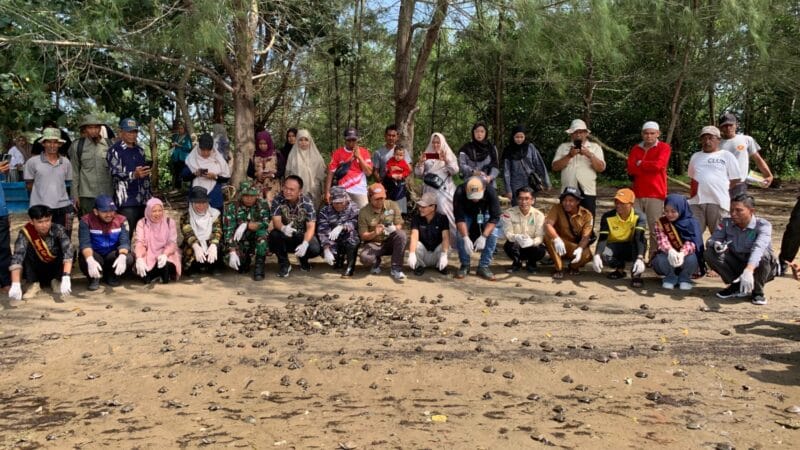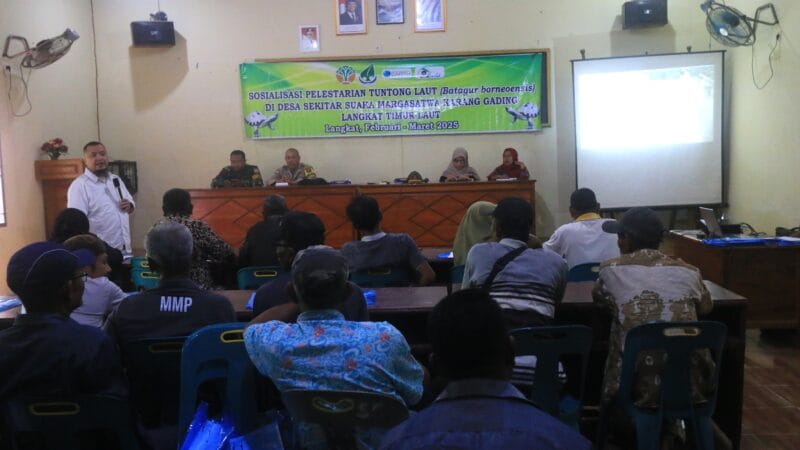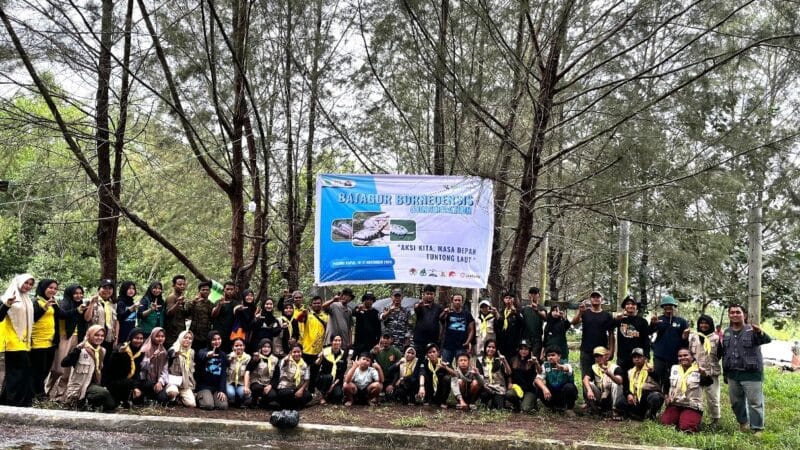Final Report of Preliminary Study of Painted Terrapin in Aceh Tamiang
Indonesia is rich of freshwater turtles and tortoises. A total of 27 species of turtles can be found in Indonesia. One of the most important and threatened with extinction according to IUCN Red List is Batagur borneoensis. The species is also included in the Top of 25 Freshwater Turtle in endangered. According a map produced by Iverson, one of the habitats is in Sumatera. However, the map did not include the Aceh Province as one of the habitats. In the meantime, the existing regulations have not list this species as protected animals, as Regulation Number 7 of 1999.
Therefore, it is important to study about the presence, population, types of threats to this species in their natural habitat. The field research conducted from October 2009 to February 2010 shows that: 1) Pusong Cium Beach and surrounding areas in Seruway Subdistrict, Aceh Tamiang District, Aceh Province, Indonesia is the habitat for this species, 2) The survey found and marked as many as nine individual of adult Batagur borneonsis; 3) The survey was able to save as many as 121 eggs for hatching (natural and semi-natural method) and of that total number, 59 eggs was hatched into hatchlings. Hatching success rate was 49.76 percent; 4) The threats to the preservation of this species are consist of natural and human factors. Natural factors such as predation by other animals such as monitor lizards and wild pigs, coast abrasion.
While the human factor are consists of the land conversion of mangrove into palm oil plantations, collecting and harvesting the eggs by the local people for consumption or sale, production of charcoal by using mangrove wood as raw material, making Pusong Cium as the location of destination of recreational activities (tourism). The study also found that the ignorance of people towards conservation and legal status of this species as well as economic motives are also factors that affect human relations in utilization (exploiting) the species. To ensure the preservation of this species required a systematic strategy: 1) It is necessary to establish head-starting facility, 2) Increasing knowledge and awareness of the local people about this species, 3) establishment of local regulations and system to protect the species, 4) continuous monitoring of this species, including research on the ecology and biology and other aspects.
You can contact us to get the report at satucita.foundation@gmail.com



.